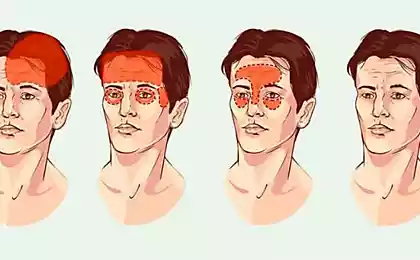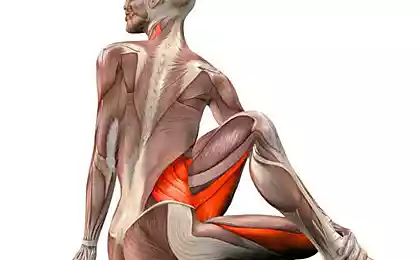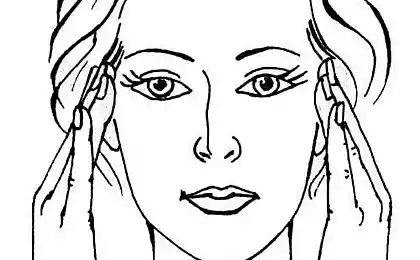668
The widest muscle of the back and large circular muscle: points of tension and pain relief
Latissimus dorsi — the muscle that covers the lower and the neighboring parts of the back and then thickens at the level of the armpit. Big round muscle — the muscle that is on the edge of the blade below a small round muscle.
Latissimus dorsi covers a large round muscle and is connected to it before attaching together to the upper arm. These interrelated muscles need to be considered together. As the pectoralis major muscle forms the anterior wall of the armpit latissimus dorsi forms back wall.
Both muscles act together to bring the hand down and toward your chest and cross the axis of the body. Imagine the freestyle movement of the hands forward and down is the work of both the mouse.
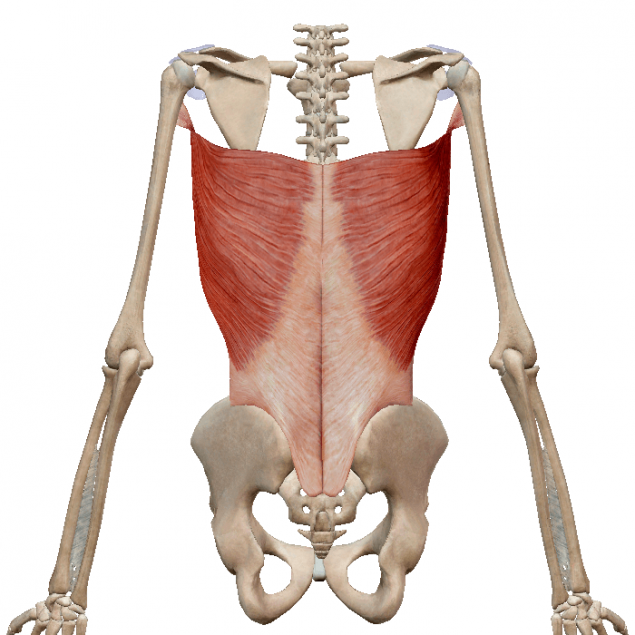
Take into account the degree of use of these muscles in athletics: when lifting weights, skiing, Hiking, gymnastics, swimming, tennis, basketball, baseball. The movement of the leading arm down and to the breast is used in so many sports.
Stress points can develop as a result of overloading of these muscles in the course of such action, or when using them to support the weight at arm's length. Imagine experiencing muscle dancer who raises, keeps on hand and carries through the whole scene with the sight of a weightless ballerina. He supported her weight on outstretched hands up, very significantly impacting their latissimus dorsi muscle.
The pain associated with the points of tension in the widest muscle in the back is annoying pain at the base of the blade and in the middle of the back, which is not changed in the active state or at rest. Wbol may also appear in the back of the shoulder and on the entire inner surface of the hand to the ring finger and little finger. You will not be able to pull the arm forward and upward without pain.

A point of tension rarely develop in a large round muscle, before they appear in the widest muscle in the back, but the pain from them is quite evident in other places. Large circular muscle causes pain in the back of the shoulder in the back part of the deltoid muscle. May be some pain in the forearm where you can't lift your arm up towards the head.
Most of the points of tension lies in the muscle mass of both muscles, which forms the rear wall of the armpit. Find the mouse under the sharp outer edge of the blade. With your fingers squeeze the muscle, lying right next to him. It is the widest muscle of the back and the big round muscle. Stress points large, round muscle located on the front surface of the rear wall of the armpit, on 5-7 cm above the edge of the lower angle of the scapula. Can deeply massage them with your thumb as you grabbed the muscle.
The point of tension of the latissimus dorsi muscle can be found in the same mass of muscle, but a little lower in her back. You can massage them with your fingers or use a small ball to compress the muscle. Lie on the floor and place the ball between the scapula and the floor. Relax and breathe, and at the same time allow gravity to squeeze the ball with your body weight acting on the point of tension.
Stretching the latissimus dorsi:

lift both hands up. Grab the wrist on the side opposite the painful arm. Pull the wrist and hand painful side, bending the torso in the opposite direction. Hold this position 10-15 seconds.
Stretching big round muscles:
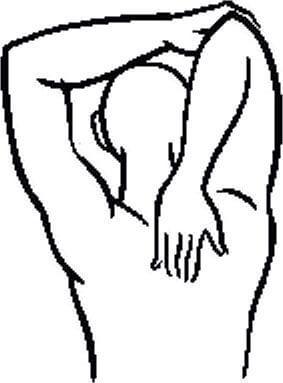
standing (or lying on your back), lift the arm so that the elbow was close to his ear. Now bend the elbow so that the forearm was behind the head. Use the other hand to pull the elbow towards the opposite side.published
Donna and Stephen Finando, "Healing hands"
We eat all the time! How snacks affect your weight
3 things that happen to our body when we went to bed late
P. S. And remember, just changing your mind — together we change the world! ©
Source: vk.com/wall-23903469?w=wall-23903469_10329%2Fall
Latissimus dorsi covers a large round muscle and is connected to it before attaching together to the upper arm. These interrelated muscles need to be considered together. As the pectoralis major muscle forms the anterior wall of the armpit latissimus dorsi forms back wall.
Both muscles act together to bring the hand down and toward your chest and cross the axis of the body. Imagine the freestyle movement of the hands forward and down is the work of both the mouse.

Take into account the degree of use of these muscles in athletics: when lifting weights, skiing, Hiking, gymnastics, swimming, tennis, basketball, baseball. The movement of the leading arm down and to the breast is used in so many sports.
Stress points can develop as a result of overloading of these muscles in the course of such action, or when using them to support the weight at arm's length. Imagine experiencing muscle dancer who raises, keeps on hand and carries through the whole scene with the sight of a weightless ballerina. He supported her weight on outstretched hands up, very significantly impacting their latissimus dorsi muscle.
The pain associated with the points of tension in the widest muscle in the back is annoying pain at the base of the blade and in the middle of the back, which is not changed in the active state or at rest. Wbol may also appear in the back of the shoulder and on the entire inner surface of the hand to the ring finger and little finger. You will not be able to pull the arm forward and upward without pain.

A point of tension rarely develop in a large round muscle, before they appear in the widest muscle in the back, but the pain from them is quite evident in other places. Large circular muscle causes pain in the back of the shoulder in the back part of the deltoid muscle. May be some pain in the forearm where you can't lift your arm up towards the head.
Most of the points of tension lies in the muscle mass of both muscles, which forms the rear wall of the armpit. Find the mouse under the sharp outer edge of the blade. With your fingers squeeze the muscle, lying right next to him. It is the widest muscle of the back and the big round muscle. Stress points large, round muscle located on the front surface of the rear wall of the armpit, on 5-7 cm above the edge of the lower angle of the scapula. Can deeply massage them with your thumb as you grabbed the muscle.
The point of tension of the latissimus dorsi muscle can be found in the same mass of muscle, but a little lower in her back. You can massage them with your fingers or use a small ball to compress the muscle. Lie on the floor and place the ball between the scapula and the floor. Relax and breathe, and at the same time allow gravity to squeeze the ball with your body weight acting on the point of tension.
Stretching the latissimus dorsi:

lift both hands up. Grab the wrist on the side opposite the painful arm. Pull the wrist and hand painful side, bending the torso in the opposite direction. Hold this position 10-15 seconds.
Stretching big round muscles:

standing (or lying on your back), lift the arm so that the elbow was close to his ear. Now bend the elbow so that the forearm was behind the head. Use the other hand to pull the elbow towards the opposite side.published
Donna and Stephen Finando, "Healing hands"
We eat all the time! How snacks affect your weight
3 things that happen to our body when we went to bed late
P. S. And remember, just changing your mind — together we change the world! ©
Source: vk.com/wall-23903469?w=wall-23903469_10329%2Fall





